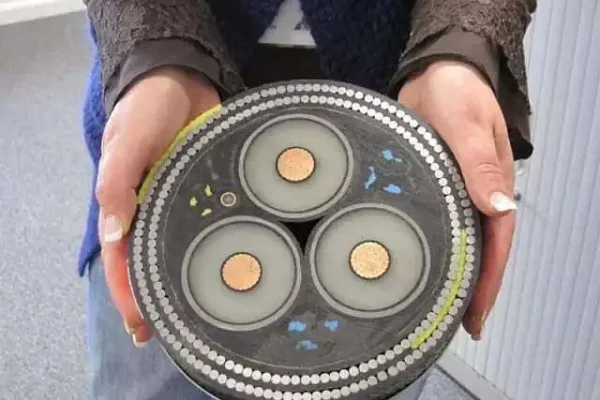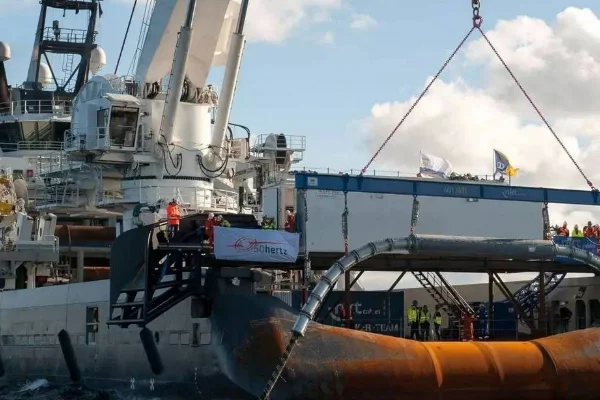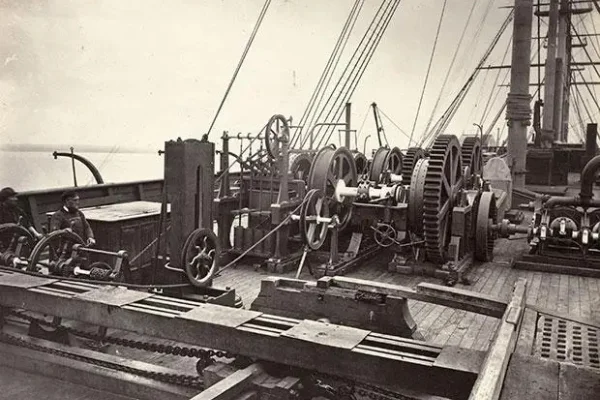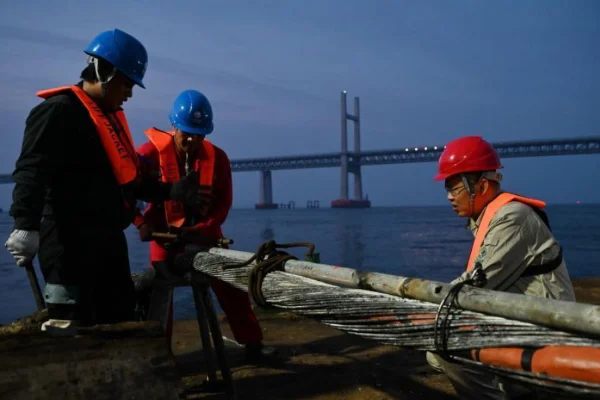In the construction of power projects, there is a type of project construction is very difficult. It is laying submarine fiber optic cable lines. It is usually applied to ultra-long-distance power transmission or data transmission. For example, cross-country transmission or trans-oceanic transmission. Facing the unknown situation under the sea, any cable laying project is difficult.
A submarine fiber optic cable is a type of cable that is laid on the seabed. It is used for long-distance power transmission and information transfer and is one of the main ways to connect the world. With the more frequent exchange of information between regions, the demand for long-distance transmission across the sea is getting higher and higher. More and more undersea lines are established on the seabed.
Submarine cable structure is complex. It is mainly used for the protection of cables. Due to various uncertainties under the sea, the cable may be threatened at any time.

On the outside of the submarine cable, there is asphalt or vinyl material as the outer sheath to prevent seawater erosion and mechanical damage. Inside the cable, the optical fiber and conductors are sleeved into a steel tube to prevent damage from water pressure.
The outside is coated with a high-strength steel wire armor and PVC material as a protective layer. A layer of bitumen is also applied to prevent seawater erosion.
The inner test will use metal armor to increase support and prevent water pressure from damaging the cable. The conductor is aluminum or copper. For submarine fiber optic cables, the transmission medium is replaced with optical fiber for data transmission. The voids are filled with petroleum jelly to reduce the fluctuations to which the optical fiber is subjected.
Undersea fiber optic cable is widely used in various large-scale projects. Including offshore wind power, cross-sea transmission, offshore drilling, and so on.
In the whole submarine cable system, the cable is used for transmission only. There are other above-water parts and underwater parts that work together to form a complex system.
The above-water equipment includes fiber optic cable terminal equipment, remote power supply, line detection equipment, network management equipment, and so on.
Terminal equipment is responsible for sending and receiving signals from both ends of the submarine fiber optic cable. Detection equipment is used for monitoring warnings and fault location. After all, it is unrealistic to rely on manpower to investigate thousands of kilometers.
Underwater equipment includes fiber optic cables, repeaters, and so on. Fiber optic cable we all know its role. But do you know about repeaters? This is the equivalent of a signal amplifier. Although the loss of fiber optic cable is small, it is amplified a lot when placed under ultra-long transmission distances. Repeaters are used to amplify signals and compensate for signal attenuation, supporting the transmission of fiber optic cables over long distances.
Facing various complex environments and dangers under the sea, there are thousands of kilometers of laying distance. How should submarine fiber optic cable be laid? This is not a simple just put into the seabed on the line. The whole laying process is divided into two parts, shallow sea area and deep sea area.
Shallow sea laying needs to be pulled to the shore by the tractor to the fiber optic cable laying ship with floating cable. The floats are removed after a successful connection on land. The fiber optic cable then sinks to the bottom of the sea under the influence of gravity.

Deep-sea laying is where the difficulty lies. Faced with the unknown conditions of the seabed and a variety of undersea activities. For example, undersea earthquakes, undersea volcanic eruptions, and so on. The difficulty of cable laying increases geometrically.
First, you need to use underwater probes to monitor the underwater environment, avoiding rocks or trenches. Select the appropriate line.
After the line is surveyed. Then the submarine fiber optic cable needs to be laid. The subsea excavator is sunk underwater along with the fiber optic cable. Driven by the laying vessel, the subsea excavator will create a trench in the seabed. The fiber optic cable is laid into the trench through the cable guide hole. The fiber optic cable is then covered with sediment.
The difficulty of laying undersea fiber optic cable may not be apparent in words, but in reality, the process is very complex. Factors to be considered include sailing speed, laying speed, and the angle at which the fiber optic cable enters the water.
Subsea fiber optic cable laying is a very difficult project. The world's first submarine cable was laid in 1850. Are you surprised to see this? Yes, the development of submarine cables started 170 years ago.

The first submarine cable was laid across the English Channel, connecting England and France. The cable used copper wires and rubber insulation to enable the communication of information across the Channel. It provided experience and technical support for subsequent submarine cable laying.
As technology developed, the first cable across the Atlantic Ocean was laid in 1866.
Submarine fiber optic cable laying and manufacturing process has very good protection measures, but in the submarine inevitably occur accidents caused by cable line damage. For example, undersea earthquakes, or the anchors of other ships can cause damage to the cables.
The first step is to locate the damage on the thousands of kilometers of cable. Then a ship is dispatched to repair the damage. Mechanical claws are used to drag the damaged cable to the surface, where engineers repair the cable and put it back into the sea.

Although submarine cables can be repaired. But we still need to focus on cable protection. After all, the cable can be repaired, but the information data transmitted through the fiber optic cable is the most important.